
The economy of Pakistan is categorized as a developing economy. It ranks as the 24th-largest based on GDP using purchasing power parity (PPP) and the 46th largest in terms of nominal GDP. With a population of 241.5 million people as of 2023, Pakistan's position at per capita income ranks 161st by GDP (nominal) and 138th by GDP (PPP) according to the International Monetary Fund (IMF).
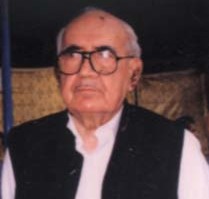
Ghulam Ishaq Khan, commonly known by his initials GIK, was a Pakistani bureaucrat, politician and statesman who served as the seventh president of Pakistan from 1988 to 1993. He previously served as Chairman of the Senate from 1985 to 1988 under president Muhammad Zia-ul-Haq, and was sworn in shortly after Zia's death.

Shaukat Aziz is a Pakistani former banker and financier who served as 17th prime minister of Pakistan from 28 August 2004 to 15 November 2007, as well as the finance minister of Pakistan from 6 November 1999 to 27 August 2004. He studied at St Patrick's High School, Karachi. Aziz graduated from the Institute of Business Administration in Karachi, and joined the corporate staff of the CitiBank Pakistan in 1969. He served in various countries' governments as CitiBank financier, and became executive vice-president of Citibank in 1999. After accepting a personal request by General Pervez Musharraf, Aziz returned to Pakistan from the United States to assume charge of the Finance Ministry as the finance minister while taking control of the country's economy. In 2004, Aziz was nominated by the Musharraf loyalist government, led by Pakistan Muslim League (Q), for the position of prime minister after the resignation of Zafarullah Khan Jamali on 6 June 2004.
From 1947 to 2017, the Indian economy was premised on the concept of planning. This was carried through the Five-Year Plans, developed, executed, and monitored by the Planning Commission (1951–2014) and the NITI Aayog (2015–2017).
The Corporate sector of Pakistan is an elite business sector expanded in financial cities of Pakistan, and a policy measure programme in the economic period of Pakistan. This programme is also regarded as "Pakistan Inc.", which is a common term used by the mass-media of Pakistan to refer to the corporate sector of the nation. The current policy measure programme is the Companies Ordinance 2016 that legally allows a variety of formations in the mixed economy of Pakistan.

Agriculture is considered the backbone of Pakistan's economy, which relies heavily on its major crops. Pakistan's principal natural resources are arable land and water. Agriculture accounts for about 18.9% of Pakistan's GDP and employs about 42.3% of the labour force. The most agricultural province is Punjab where wheat & cotton are the most grown. Mango orchards are mostly found in Sindh and Punjab provinces, making it the world's fourth largest producer of mangoes.
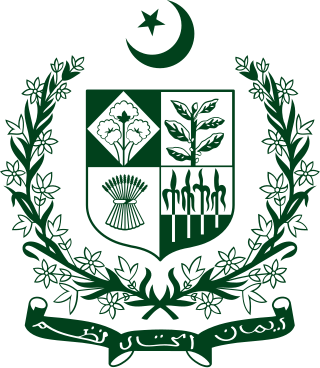
The Five-Year Plans for the National Economy of Pakistan, were the series of nationwide centralised economic plans and targets as part of the economic development initiatives, in the Pakistan. The plan was conceived by the Ministry of Finance (MoF), and were studied and developed by the Economic Coordination Committee (ECC) based on the theory of Cost-of-production value, and also covered the areas of Trickle-down system. Supervision and fulfillment of this programme became the watchword of Pakistan's civil bureaucracy since early 1950s.
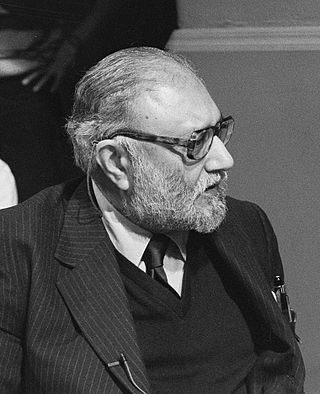
Science and technology is a growing field in Pakistan and has played an important role in the country's development since its founding. Pakistan has a large pool of scientists, engineers, doctors, and technicians assuming an active role in science and technology. The real growth in science in Pakistan occurred after the establishment of the Higher education Commission in 2002 which supported science in a big way and also became the major sponsor of the Pakistan Academy of Sciences under the leadership of Prof. Atta-ur-Rahman. The emphasis was placed on quality rather than numbers during this period. The quality measures introduced by Prof. Atta-ur-Rahman as Founding Chairman HEC included:1) All Ph.D. thesis were evaluated by eminent foreign scientists,2) All PhD theses and research papers were checked for plagiarism 3) Some 11,000 students were sent abroad to leading universities for PhD level training and absorbed on their return, 4) Appointments at faculty positions were linked to international stature of the applicants as judged from their international publications, patents and citations, and (5) Quality Enhancement Cells were established in all universities for the first time in the history of the country. (6) The minimum criteria for establishment of a new university were approved by the Cabinet and universities that did not meet these criteria were closed down. (7) The Model University Ordinance was approved setting the governance parameters for new universities. (8) A list of fake higher education institutions was prepared and made public. (9) Quality Assurance Agency (QAA) was set up within the Higher Education Commission that established Quality Enhancement Cells (QECs) as its operational units in public and private-sector universities across the country. (10) The funding of universities was linked to excellence in teaching and research under a formula based funding mechanism that considered enrolment, subjects and quality of teaching and research. The first IT policy and implementation strategy was approved under the leadership of Prof. Atta-ur-Rahman, then Federal Minister of Science & technology, in August 2000 which laid the foundations of the development of this sector On the request of Prof. Atta-ur-Rahman, Intel initiated a nationwide programme to train school teachers in Information and Communication technologies in March 2002 which has led to the training of 220,000 school teachers in 70 districts and cities across Pakistan. A 15-year tax holiday was approved on the recommendation of Prof. Atta-ur-Rahman which has resulted in growth of IT business from $30 million in 2001 to over $3 billion. The Pakistan Austria University of Applied Engineering (Fachhochschule) has been established in Haripur Hazara under a Steering Committee Chaired by Prof. Atta-ur-Rahman in which students will get degrees from several Austrian universities. Pakistan's growth in scientific output can be seen from the fact that in 1990 Pakistan published 926 scholarly documents while in 2018 the number rose to 20548, a twenty times increase.In contrast India published 21443 scholarly documents in 1990 and the number rose to 171356 in 2018, an eight times increase. In 2018, 336 people per million were researchers in the R&D in Pakistan compared to 256 people per million being researchers in India. The reforms begun by Prof. Atta-ur-Rahman FRS in 2003-2008 have continued over the subsequent decade and according to the Web of Science report, there was a 300% growth in research publications in 2019 over the decade, with 2019 marking the first year in which Pakistan was ranked above the world average in research. In 2019, Pakistan produced 300% more publications indexed in the Web of Science Core Collection than in 2010. In the decade of 2010-2019, more than half of Pakistan’s research was published in journals with Impact Factor. The global influence of Pakistan’s research is increasing as scientists in the country are publishing more in top quartile journals. The Category Normalized Citation Impact of Pakistan’s publications has risen from 0.67 to 1.03. output. As of 2020, Pakistan has 85% tele density with 183 million cellular, 98 million 3G/4G and 101 million broadband subscribers, due to the foundations laid by Prof. Atta-ur-Rahman of the IT and telecom industry during 2000-2008. In an analysis of scientific research productivity of Pakistan, in comparison to Brazil, Russia, India and China, Thomson Reuters has applauded the developments that have taken place as a result of the reforms introduced by Prof. Atta-ur-Rahman FRS, since Pakistan has emerged as the country with the highest increase in the percentage of highly cited papers in comparison to the "BRIC" countries
The Planning Commission is a financial and public policy development institution of the Government of Pakistan. The Commission comes under Ministry of Planning Development & Special Initiatives The Planning Commission undertakes research studies and state policy development initiatives for the growth of national economy and the expansion of the public and state infrastructure of the country in tandem with the Ministry of Finance (MoF).
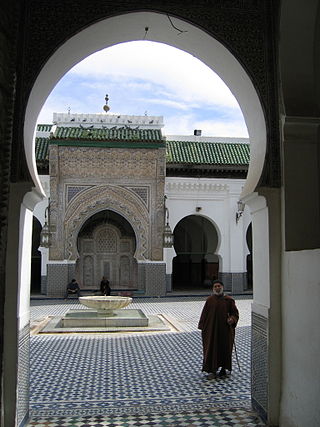
Science and technology in Morocco has significantly developed in recent years. The Moroccan government has been implementing reforms to encourage scientific research in the Kingdom. While research has yet to acquire the status of a national priority in Morocco, the country does have major assets that could transform its R&D sector into a key vehicle for development. The industry remains dominated by the public sector, with the universities employing 58% of researchers. Morocco's own evaluation of its national research system – carried out in 2003 – revealed that the country has a good supply of well trained high quality human resources and that some laboratories are of very high quality. However, the greatest gap at that point of time lied in the link between research and innovation. The educational qualifications of Moroccan researchers have increased significantly since the early 1990s. The University of Al-Karaouine is considered the oldest continuously operating academic degree-granting university in the world.

Since independence in 1947, the economy of Pakistan has emerged as a semi-industrialized one, the on textiles, agriculture, and food production, though recent years have seen a push towards technological diversification. Pakistan's GDP growth has been gradually on the rise since 2012 and the country has made significant improvements in its provision of energy and security. However, decades of corruption and internal political conflict have usually led to low levels of foreign investment and underdevelopment.
Mubashir Hassan was a Pakistani politician, humanist, political adviser, and an engineer who served in the capacity of Finance Minister in Bhutto administration from 1971 until 1974.
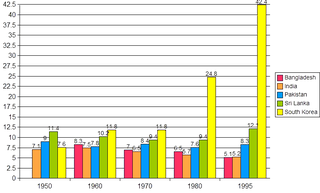
The nationalisation process in Pakistan was a policy measure programme in the economic history of Pakistan that negatively impacted the country's industrialization and undermined the trust of businessmen and investors. The process was first introduced, promulgated and implemented by Zulfikar Ali Bhutto and Pakistan Peoples Party to lay the foundation of socialist economics reforms to improve the growth of the national economy. Since the 1950s, the country had undergone a speedy industrialisation. But, as time progressed, the labour trade unions and labour-working class had increasingly strained relations with the industrial business oligarch class, having neglected to improve working conditions and failing to provide a healthy and safe environment for the workers in these industrial industries.

The privatisation process in Pakistan, sometimes referred to as denationalisation programme or simply the privatisation in Pakistan) is a continuous policy measure program in the economic period of Pakistan. It was first conceived and implemented by the then-people-elected Prime Minister Nawaz Sharif and the Pakistan Muslim League, in an attempt to enable the nationalised industries towards market economy, immediately after the economic collapse of the Soviet Union in 1989–90. The programme was envisaged and visioned to improve the GDP growth of the national economy of Pakistan, and reversal of the nationalisation programme in 1970s— an inverse of the privatisation programme.

The Medium Term Development Framework, is a policy measure programme of the Government of Pakistan drafted by the Ministry of Finance, Economic Coordination Committee and the Planning Commission of Pakistan, formulated to strengthen the national economy and civil infrastructure.

The Eighth Five-Year Plans for National Economy of Pakistan was a set of a centralized and planned economic goals and targets designed to strengthen the economic development and performance of Pakistan between 1993 and 1998.

The First Five-Year Plans for the National Economy of Pakistan,, was a set of the Soviet-styled centralized economic plans and targets as part of the economic development initiatives, in the Pakistan. The plans were drafted by the Finance minister Malick Ghoulam to Prime minister Liaquat Ali Khan who initially backed the programme, in 1948.

Pakistan began a period of economic liberalisation in the 1990s to promote and accelerate economic independence, development, and GDP growth.

The economic policies proposed under the banner of "Islamisation" in Pakistan include executive decrees on Zakāt (poor-due), Ushr (tithe), judicial changes that helped to halt land redistribution to the poor, and perhaps most importantly, elimination of riba. Perhaps the foremost exponent of Islamisation among Pakistan's rulers—General Muhammad Zia-ul-Haq—advanced a programme in 1978 to bring Pakistan law in line with the principles of Sharia law.
The Periods of Stagflation, also known as Stagflation in Pakistan or inflation and unemployment in Pakistan, are periods of economic stagflation in Pakistan's economic history, which has affected Pakistan's economic trajectory since its inception. Pakistan's economy is battling a state of virtual "stagflation", means that Pakistan is grappling with the challenging conditions of sluggish economic activity, rising unemployment and rising inflation.











